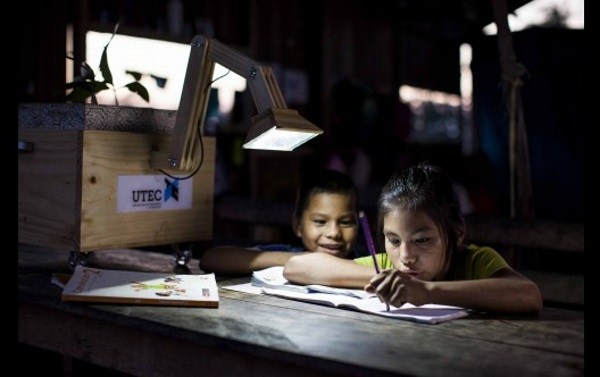Grow lights or plant lights have been used to stimulate plant growth by emitting an electromagnetic spectrum appropriate for photosynthesis. But this Plant Lamp is an entirely different concept; diametrically opposite in fact. Instead of using light for growth, these plants produce light as they grow.
The concept of generating electricity from plants is not exactly new, but this is a great leap forward. Lemon Battery or Potato Battery has long been used in school labs for instruction purposes. These batteries illustrate the type of chemical reaction (oxidation-reduction) that occurs in batteries. Zinc and copper strips are used as electrodes, and the juice inside simulates the electrolyte. There are many variations of the lemon cell that use different fruits (or liquids) as electrolytes and metals other than zinc and copper as electrodes. But these batteries are part of science kits and used only for demonstration purposes.
A research team of the Universidad de Ingeniería y Tecnología (UTEC) has developed a Plant lamp as an innovative alternative renewable energy generating system. It can rightly be called “Electricity grown on trees”. Communities in forested areas that have a shortage of electric energy can greatly benefit from the concept.
In this project non-conductive pots are used for growing plants and plant nutrients are used as electrolyte. Electrodes capable of converting plant nutrients into electric energy are installed in the pots. The Plant lamp is capable of supplying two hours of light per day through low energy consumption, high illumination LED lamp. The system operates with the energy stored in the soil containing nutrients and/or microorganisms released by plants during their growth and this enables the free electrons from the microorganisms to be used to feed the lamp.
According to the researchers, the system utilizes the region’s own natural resources such as the soil and plants without any impact on the environment. The system will enable communities to have access to renewable energy to provide light to their homes and contribute to the self-sustainability of the population.
